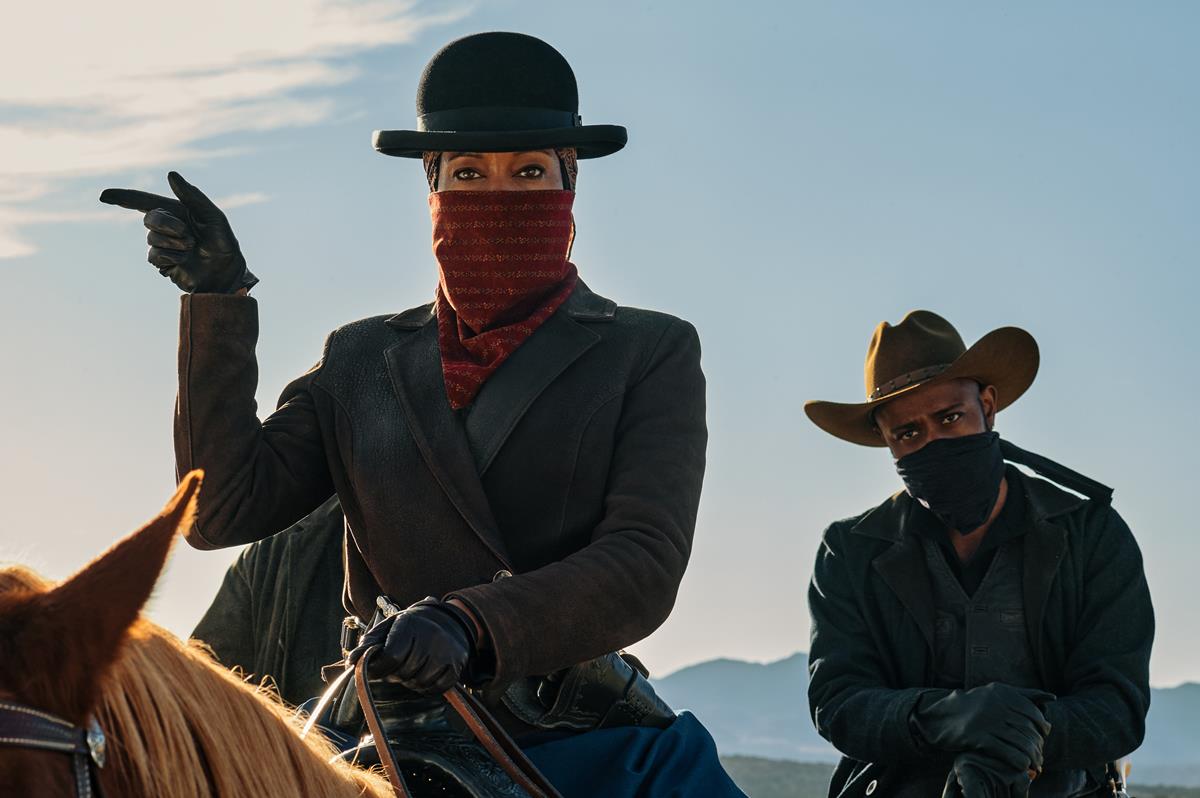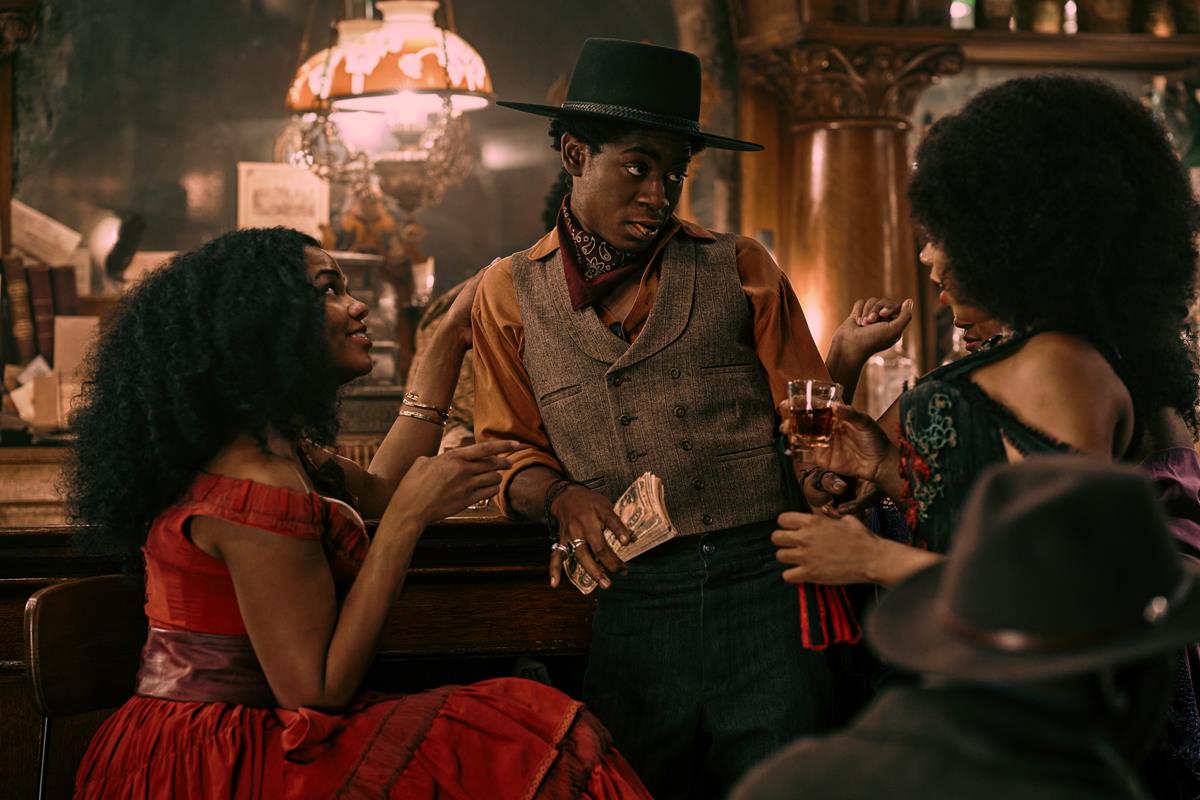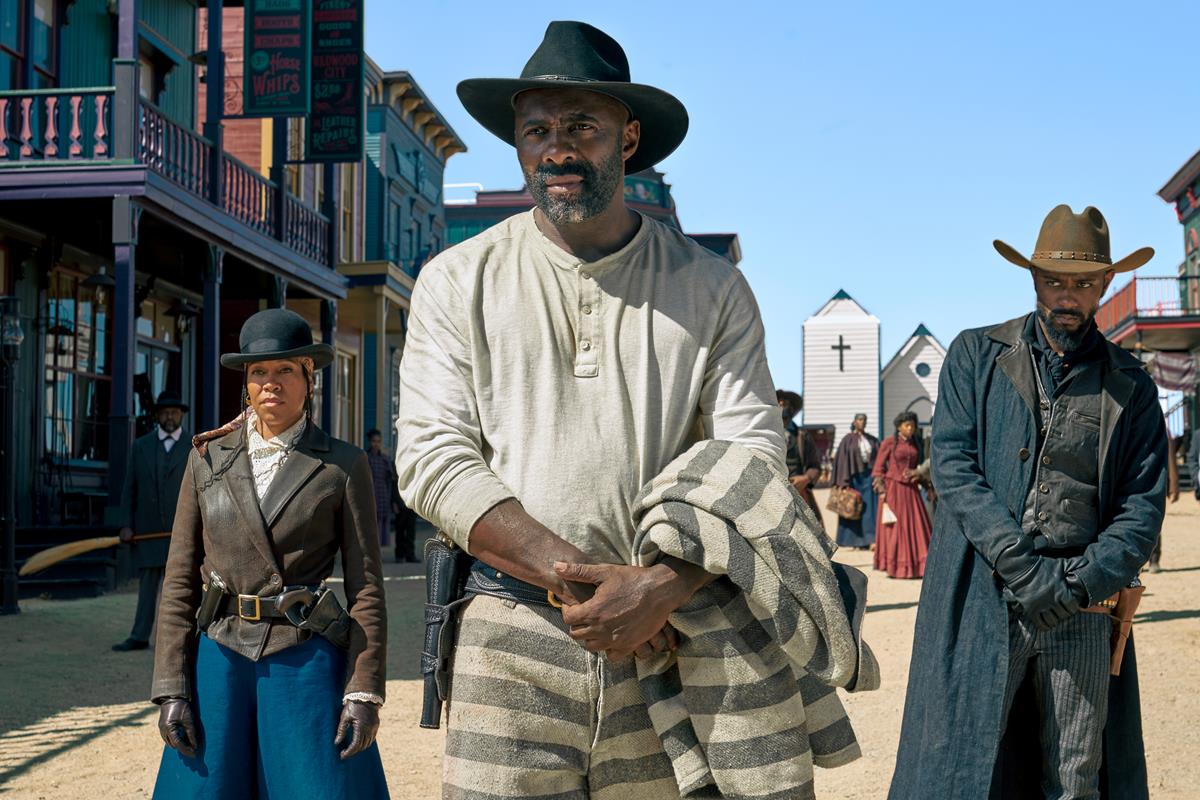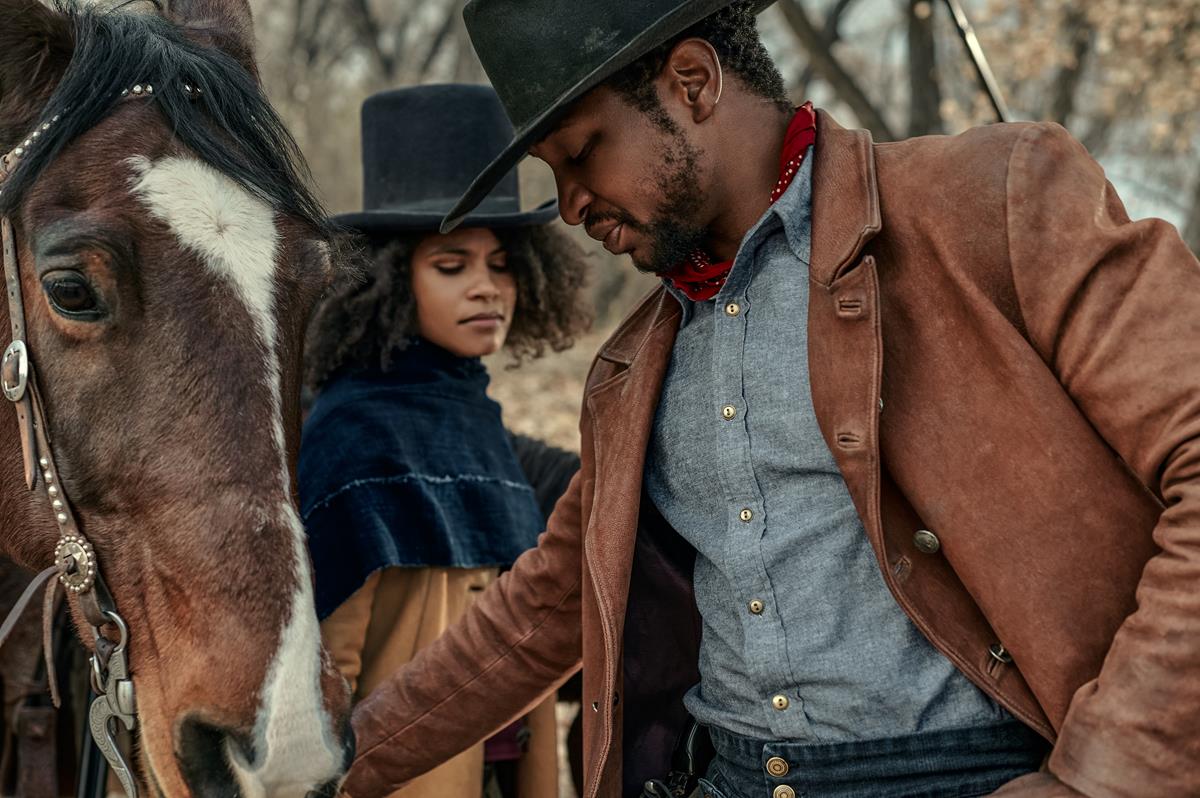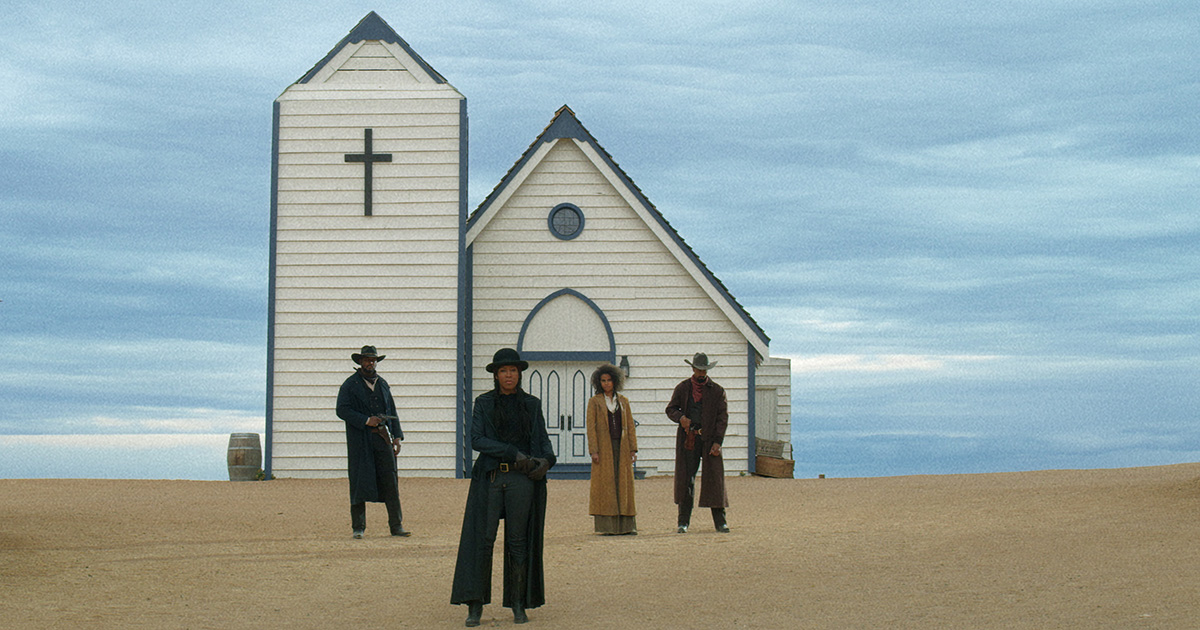
You don’t have to look far to see the references for The Harder They Fall, a new take on the old Western genre. Sergio Leone’s Spaghetti Westerns with all their in-the-moment tension and imposing close-ups, plus the cascade of Tarantino violence from Django Unchained. But the music of Ennio Morricone isn’t referenced as the director, Jeymes Sammuel, was also the film’s composer.
This unusual combination was refreshing for editor Tom Eagles as it showed him where the rhythm emanated for the movie, as he told the Art of the Cut podcast. “He wrote a bunch of songs, and there are a couple of needle drops. The script was filled with all these reggae and dub needle drops initially, and there’s a great musicality to the dialogue as well.
“With Jeymes, he doesn’t really distinguish between music, dialogue, and sound effects. It’s all just one big opera. It was a constant form of interplay and a constant dance between music and picture to try and find the right kind of symphony of all of those elements.”
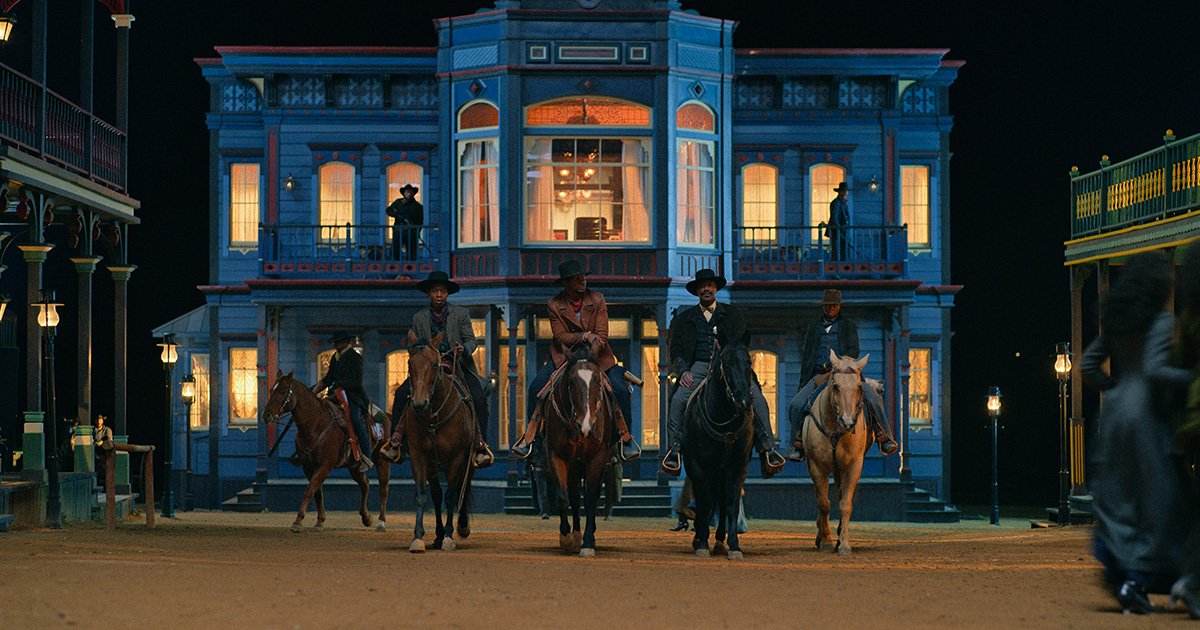
As soon as Tom was attached to the movie he latched on to those references, “Starting from the color Westerns and the big sky Westerns were influential, and definitely the new Westerns and the Italian Spaghetti Westerns. I guess I just absorbed that over a period of time leading up to cutting the film. Finding those Leone-style super close-ups made sense to me; I was familiar with the grammar.
“The pacing was something we took from those older Westerns, learning to be patient when building tension. Having to hold off and counter the expectations of a lot of contemporary cinemagoers who wanted things to be fast. It needs a little time to gestate.”
READ MORE: Art of the Cut: Building the New Western in “The Harder They Fall” (Frame.io)
Ironically, the super close-ups were sometimes a cover for the lack of extras in scenes due to COVID restrictions, but they did the trick. “We couldn’t pack the bar out the way that Jeymes wanted to, initially. Although we did later go back and populate some wide shots and put some people into them in that first pass, they had to figure out a way to shoot it that didn’t reveal that the room was completely empty.
“All these close-ups on objects, like a beer glass going shattering, or cards going down on a table, they’re all wonderful punctuation points to the music. That was one of the few times that we were challenged but ultimately blessed by what COVID threw at us.”
This new Western genre still relied on a finale which Tom was assembling as the shots came in, “That battle sequence was crazy. It was coming in piece-by-piece throughout the shooting. We were getting shots by the main unit, shots by the second unit; things were divided up by cast availability, and there wasn’t a very strict dogma about what had to go where. There was a script, obviously, but Jeymes was very happy for me to move things around and try and find the right rhythm and make that emotional call.
“There’s a period of that fight that’s very fun, and the backbone of that is the Zazie Beetz and Regina King fight, which is a blast to watch because it’s been boiling for a while between the two of them, but there are also all these emotional beats, and it didn’t really work to intercut those.
“So we had to rearrange things and backload all of the emotions towards the end of that sequence to keep all the characters on the same page, emotionally, even though they’re in different parts of the town doing different things.”
For Tom, working with a director on his first movie ultimately turned in to an exercise of patience, particularly when his experience told him that some scenes had to be lost. “With some directors, you need to be a little bit careful that you don’t taint the relationship or that you tip your hat towards something so that they get the feeling that you’ve always been wanting to get rid of a scene. Or you’ve always had some agenda.
“You do have to get to that conclusion with them, and I think Jeymes was really good about things that had to come out, even if it was painful.
“We found with this movie that the style was part of the substance of the movie, and if you take the style out, you take some of the soul out of the movie. So I think for both of us, it was a learning experience and highlighted why this has to be done together as a team.”
As was true for so many productions, the movie was shut down nearly as soon as it had started due to the lockdown. Tom returned to New Zealand and started a long-distance collaboration with Sammuel.
“I think I ended up having more interaction than I’ve ever had with a director during a shoot. We would just hang out and talk about the movie and about other movies. He’s a great storyteller, so all I had to do really was listen. And in a way, that’s your role as an editor.
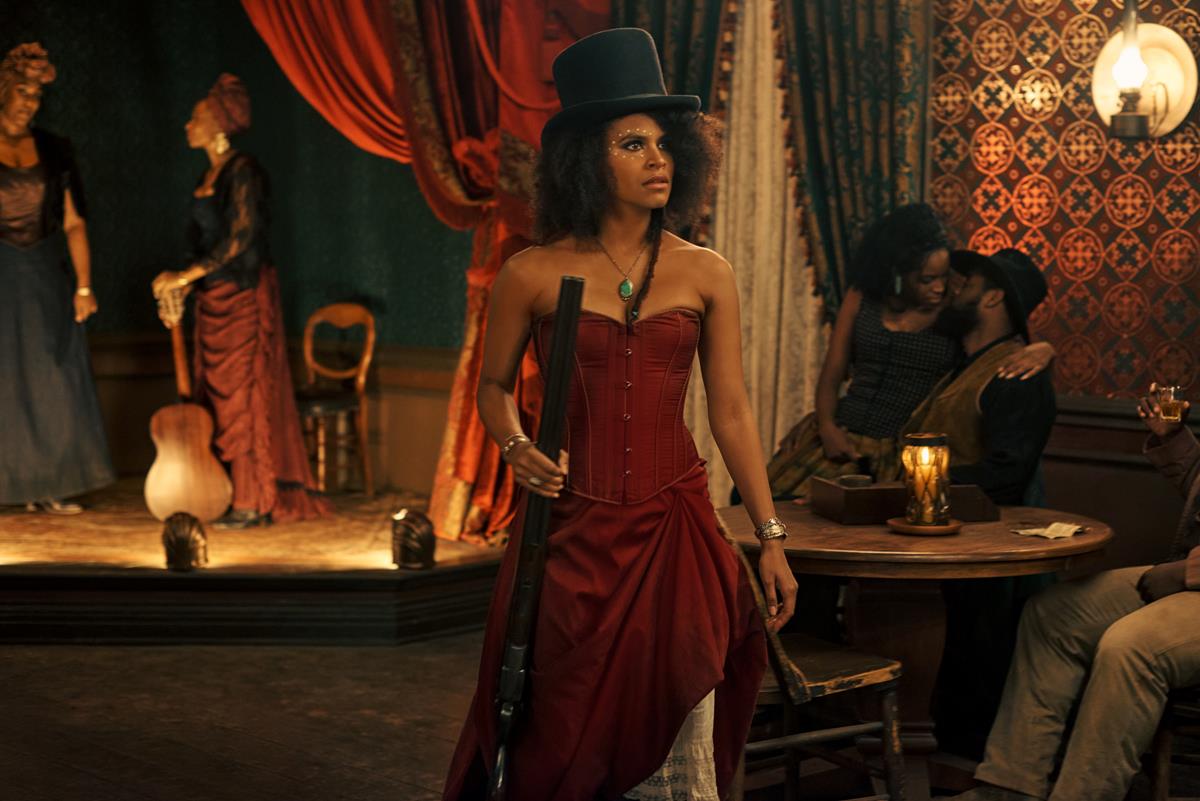
“The director/composer thing was new to me and was very interesting. There was a tension between ‘Director Jeymes’ and ‘Composer Jeymes.’ Director Jeymes loved when I put temp music in because it would make the scene look better, but Composer Jeymes sometimes felt like he either had the wrong idea of the sound in his head or he had the right idea but that it’s a lot more to live up to.
“So that was a bit of a challenge. I always gave him the option because he liked both, so I would give Director Jeymes a cut with all the sound and music and then give Composer Jeymes a cut without it.”
The Harder They Fall is currently on Netflix.



